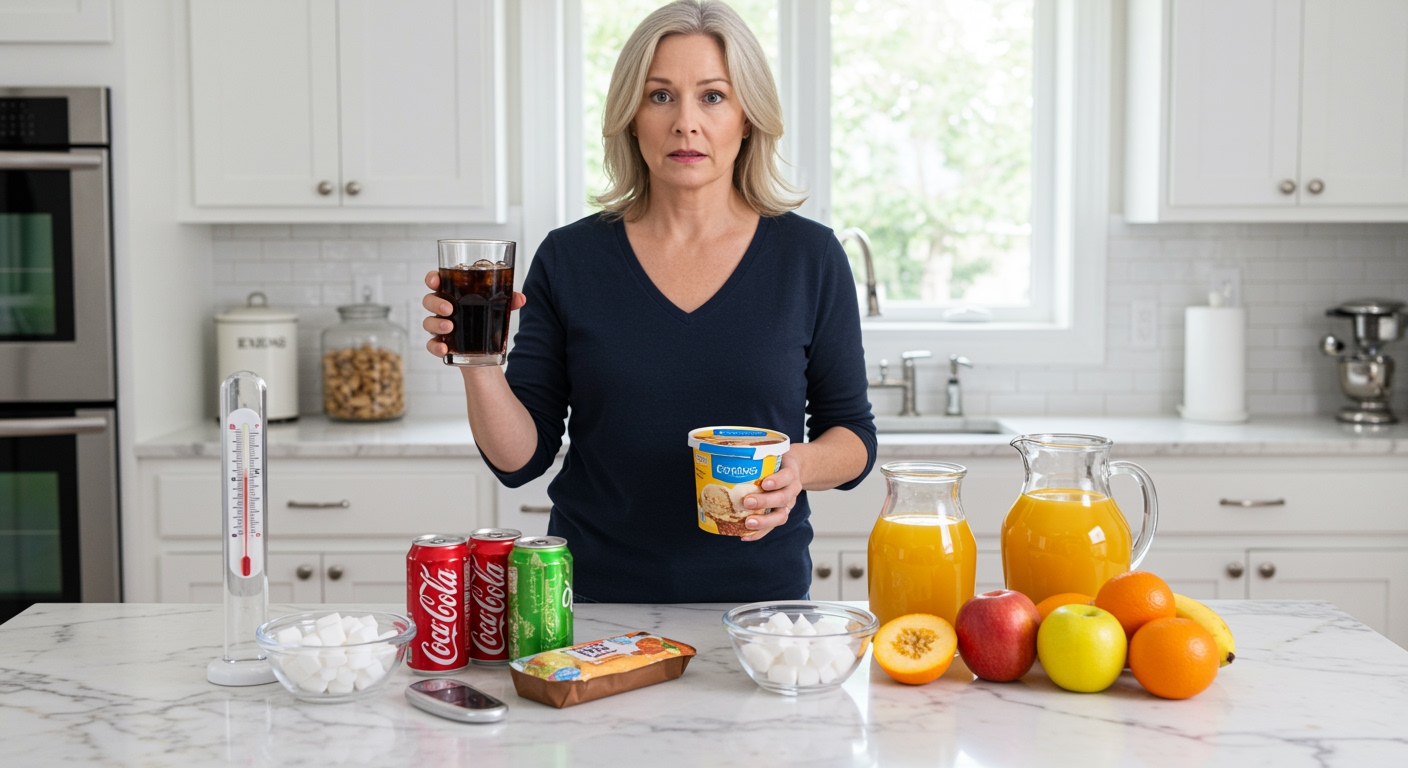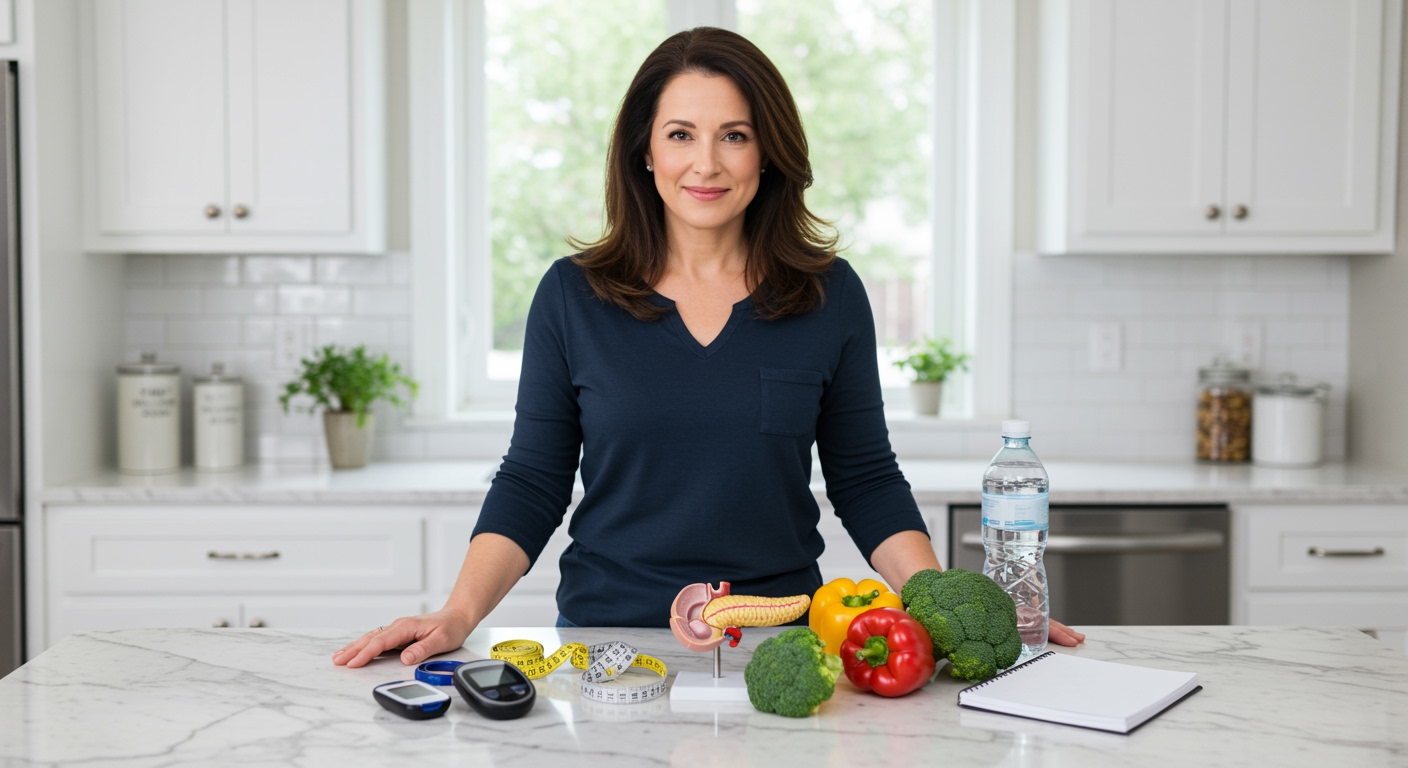✪ Key Highlight: Americans consume 7 times more sugar as temperatures rise from 54°F to 86°F, creating serious health risks.
Introduction
Your body craves more sugar when the temperature climbs, and this natural response could be destroying your health.
A groundbreaking study published in Nature Climate Change reveals that rising temperatures drive Americans to consume dramatically more added sugar through sweetened drinks and frozen desserts.
Hi, I’m Abdur, your nutrition coach and today I’m going to analyze this alarming research that shows how climate change is reshaping American sugar consumption patterns in dangerous ways.
How Does Heat Actually Change Your Sugar Cravings?
Researchers tracked 40,000 to 60,000 American households over 15 years to understand this connection.
They discovered that for every degree Fahrenheit increase between 54°F and 86°F, people consumed an extra 0.4 grams of added sugar daily.
At 54°F, Americans consumed just over 2 grams of added sugar per day.
But at 86°F, that number jumped to more than 15 grams daily.
Your body seeks quick energy and cooling relief when temperatures rise, making sweetened beverages and frozen treats irresistible.
The American Heart Association recommends only 36 grams daily for men and 25 grams for women, making this temperature-driven increase extremely concerning.
✪ Fact: Sugar intake drops when temperatures exceed 86°F because extreme heat suppresses appetite completely.
Which Groups Face The Highest Risk?
The study revealed shocking disparities in how different groups respond to rising temperatures.
Lower-income Americans showed the strongest correlation between heat and sugar consumption.
People with lower education levels also increased their sugar intake more dramatically during hot weather.
White Americans demonstrated higher temperature-driven sugar consumption compared to other ethnic groups.
Men consumed significantly more sugary drinks than women when temperatures climbed.
Outdoor workers faced the greatest risk because they experience more direct heat exposure throughout their workday.
These groups often have limited access to healthier cooling alternatives or may lack knowledge about the health consequences of increased sugar consumption.
✪ Note: Socioeconomically disadvantaged populations already exceed recommended sugar intake by 20% before temperature increases.
What Types Of Sugar Products Drive This Increase?
Sweetened beverages like soda and juice showed the most dramatic consumption increases during hot weather.
Frozen desserts including ice cream also rose significantly, though not as sharply as liquid sugars.
Interestingly, sugar from bakery goods actually decreased when temperatures climbed.
Raw sugars and oils also showed reduced consumption during hotter periods.
This pattern suggests people instinctively choose chilled and hydrating sugar sources when seeking relief from heat.
Your brain associates cold, sweet liquids with immediate cooling and energy replenishment.
The convenience and marketing of sugary drinks make them the default choice for heat relief in American culture.
✪ Pro Tip: Water with fresh fruit provides better hydration and cooling without the dangerous sugar spike.
What Are The Long-Term Health Consequences?
Excessive added sugar intake directly links to obesity, heart disease, diabetes, and cancer.
The study projects that climate warming could add the equivalent of 7 billion additional soda cans to American consumption annually by 2095.
This represents an extra 2.99 grams of added sugar per person daily if temperatures rise by 5 degrees Celsius.
Your pancreas struggles to produce enough insulin when sugar intake increases consistently over time.
Insulin resistance develops gradually, leading to type 2 diabetes and metabolic syndrome.
Excess sugar also triggers inflammation throughout your cardiovascular system, increasing heart attack and stroke risk.
The researchers warn that vulnerable populations already consuming dangerous sugar levels will face even greater health threats as temperatures continue rising.
✪ Fact: Small daily sugar increases compound into massive health risks over decades of consumption.
How Can You Protect Yourself From This Hidden Threat?
Awareness represents your first line of defense against temperature-driven sugar cravings.
Keep cold water readily available during hot weather instead of reaching for sugary alternatives.
Fresh fruits like watermelon and oranges provide natural cooling with beneficial nutrients rather than empty calories.
Herbal iced teas without added sweeteners offer refreshing alternatives to sodas and juices.
Plan your meals and snacks ahead of hot weather to avoid impulsive sugar-laden choices.
Create cooling environments in your home and workplace to reduce the psychological drive for cold, sweet relief.
Remember that your body adapts to lower sugar intake over time, making healthier choices easier with consistent practice.
✪ Pro Tip: Freeze fresh fruit pieces in ice cube trays for naturally sweet, cooling treats without added sugars.
The Bottom Line
Rising temperatures create a dangerous cycle where Americans automatically consume more sugar through sweetened drinks and frozen desserts, leading to serious long-term health consequences.
Climate change is not just changing our environment, it is rewiring our food choices in ways that threaten our health for generations to come.
Share your thoughts about this temperature-sugar connection in the comments below, and let me know what cooling strategies work best for you during hot weather.
References
At NutritionCrown, we use quality and credible sources to ensure our content is accurate and trustworthy. Below are the sources referenced in creating this article:
- ABC News: As the world gets hotter, Americans are turning to more sugar, study finds
- Scripps News: Global warming is driving up Americans’ sugar intake, study finds
- CBS News: High temperatures are driving Americans to consume more sugar, study finds
- EOS: Heat Spurs Unequal Consumption of Sweet Treats
- Nature Climate Change: Temperature-driven sugar consumption and health risks in the United States





